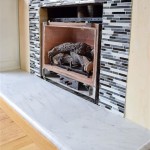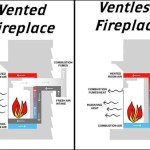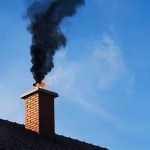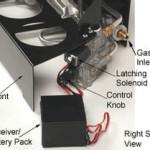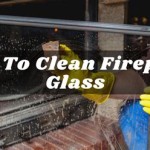Branch Fireplace Screens: Aesthetics, Functionality, and Safety
Fireplace screens serve a multifaceted purpose in homes with working fireplaces. They are primarily safety devices, preventing embers and sparks from escaping the firebox and potentially igniting nearby flammable materials. Beyond their practical function, however, fireplace screens can also be significant design elements, contributing to the overall aesthetic of a room. The "branch" fireplace screen is a specific style that seeks to emulate the organic forms found in nature, adding a touch of rustic elegance or modern minimalism, depending on the design, to a fireplace setting.
Branch fireplace screens, as the name implies, are characterized by their representation of tree branches. These representations can range from highly realistic depictions to more abstract and stylized interpretations. The materials used in their construction, the detailing employed in their design, and the overall size and form factor all contribute to the screen's aesthetic appeal and its suitability for different architectural styles and interior design schemes.
Key Point 1: Safety and Functionality of Branch Fireplace Screens
The primary function of any fireplace screen, including a branch design, is to prevent the escape of burning embers and sparks. These projectiles can pose a significant fire hazard, especially in homes with carpets, rugs, or upholstered furniture near the fireplace. A well-constructed fireplace screen acts as a barrier, containing these hazardous particles within the firebox and minimizing the risk of accidental fires.
The effectiveness of a branch fireplace screen in fulfilling this safety function depends on several factors. The mesh size of the screen is crucial; smaller mesh openings provide better protection against smaller embers and sparks. The material used in the screen's construction also plays a vital role. Steel and iron are common choices due to their heat resistance and durability. The construction quality, particularly the welding or joining of the mesh to the frame, is equally important. Weak welds or poorly joined seams can create points of failure, allowing embers to escape.
Beyond ember containment, fireplace screens also offer protection against direct contact with the fire itself. While not typically intended as barriers against intentional access by children or pets (specialized fireplace guards are designed for that purpose), they do provide a degree of separation, reducing the risk of accidental burns. The heat radiating from a fire can be intense, and a screen can help to diffuse this heat, making the area around the fireplace more comfortable. However, users should still exercise caution and maintain a safe distance from the fireplace, even with a screen in place.
The design of the branch element itself can contribute to or detract from the screen's functionality. Densely packed or overlapping branches might obstruct airflow, potentially affecting the combustion efficiency of the fire. Adequate ventilation is essential for proper burning and to prevent the buildup of dangerous gases, such as carbon monoxide. Therefore, the branch design should be carefully considered to ensure it does not compromise the fireplace's performance or safety.
Regular maintenance of a fireplace screen is essential for maintaining its functionality and safety. This includes cleaning the screen to remove soot and creosote buildup, which can reduce airflow and increase the risk of fire. Inspecting the screen for any signs of damage, such as rust, cracks, or loose welds, is also crucial. Any damaged sections should be repaired or the screen replaced to ensure its continued effectiveness as a safety barrier.
Key Point 2: Aesthetic Considerations of Branch Fireplace Screens
Branch fireplace screens offer a unique aesthetic dimension to fireplace décor. The naturalistic imagery of branches can complement a wide range of interior design styles, from rustic and traditional to modern and minimalist. The specific design, materials, and finish of the screen significantly influence its overall aesthetic impact.
The style of the branch depiction can vary considerably. Some screens feature highly realistic renderings of branches, complete with detailed bark textures and lifelike twig structures. These designs often evoke a sense of naturalism and can be particularly well-suited for homes with a rustic or country aesthetic. Other screens employ a more stylized or abstract approach, simplifying the branch forms and emphasizing geometric shapes or patterns. These minimalist designs can be a striking addition to modern and contemporary interiors.
The materials used in the construction of the screen also play a crucial role in its aesthetic appeal. Wrought iron is a popular choice for branch fireplace screens due to its durability and its ability to be shaped into intricate designs. The finish applied to the iron can further enhance its aesthetic characteristics. Black finishes are common, providing a classic and versatile look that complements many fireplace surrounds. Other finishes, such as bronze, copper, or even painted colors, can be used to create a more distinctive and personalized aesthetic.
The size and proportions of the branch fireplace screen should be carefully considered in relation to the size and style of the fireplace opening. A screen that is too small may look insignificant, while a screen that is too large can overwhelm the fireplace and detract from its overall appearance. The height and width of the screen should be proportional to the fireplace opening and the surrounding wall space.
The branch design can also be incorporated into other fireplace accessories, such as tool sets or log holders, to create a cohesive and coordinated look. A unified aesthetic theme can enhance the overall visual appeal of the fireplace area and contribute to a more harmonious interior design.
Consideration of the existing architectural details and interior design elements is crucial when selecting a branch fireplace screen. The screen should complement the overall style of the room and enhance its aesthetic appeal rather than clashing with or detracting from it.
Key Point 3: Materials and Construction of Branch Fireplace Screens
The longevity and effectiveness of a branch fireplace screen are heavily dependent on the quality of the materials used and the construction techniques employed. The materials must be able to withstand high temperatures and frequent use, while the construction must be robust enough to prevent warping, bending, or breakage.
Steel and iron are the most common materials used for the frames and branch elements of fireplace screens. Steel offers excellent strength and heat resistance, while iron provides a classic aesthetic and is relatively easy to work with. The specific type of steel or iron used can vary, with higher-grade materials generally offering better durability and performance. The thickness of the metal is also a critical factor; thicker metal provides greater resistance to warping and bending under high heat.
The mesh of the fireplace screen is typically made of woven or welded wire. Woven mesh is generally more flexible and can conform to uneven surfaces, while welded mesh is more rigid and offers greater strength. The gauge (thickness) of the wire used in the mesh is important; thicker wire provides better protection against embers and sparks and is less likely to be damaged by high heat.
The joints and connections in a fireplace screen are critical points of potential failure. Welding is the most common method of joining the frame, branch elements, and mesh. High-quality welds are essential for ensuring the structural integrity of the screen. Poorly executed welds can weaken over time, leading to cracks or breaks and compromising the screen's safety and effectiveness.
The finish applied to the fireplace screen also plays a role in its durability and longevity. Powder coating is a popular choice for its resistance to heat, scratches, and corrosion. Powder-coated finishes are also available in a wide range of colors and textures, allowing for greater design flexibility. Other finishes, such as paint or lacquer, can also be used, but they may not be as durable or heat-resistant as powder coating.
The construction process should involve careful attention to detail and quality control measures to ensure that the finished fireplace screen meets the required standards for safety and performance. This includes verifying the strength and integrity of the welds, inspecting the mesh for any defects, and ensuring that the finish is applied evenly and thoroughly.
Proper handling and storage of the fireplace screen are also important for maintaining its condition and extending its lifespan. The screen should be cleaned regularly to remove soot and creosote buildup, and it should be stored in a dry place when not in use to prevent rust and corrosion.

Pine Cone Branch Fireplace Screen

White Twig Branch Fireplace Screen Decorative Screens Decor

Lourosa Quatrefoil Mirror Al Rugaib Furniture

Antique White Iron Twig Design Fireplace Fire Screen Cottage Chic 38 5w 30h

Golden Branch Fireplace Screen Deco Idee Idées De Foyer Cheminée

Gold Branches Fireplace Screen

Fireplace Screen Iron Italian Gold Twig Branch Bseid

Pinecone Fireplace Screen Rustic Lodge Branch Fire 53 W Spi Home 31765

Barton Fireplace Screen Guard 3 Panel Tree Branches Decorative 53 X 36 Inch Com
Gold Branches Fireplace Screen Neiman Marcus
Related Posts


